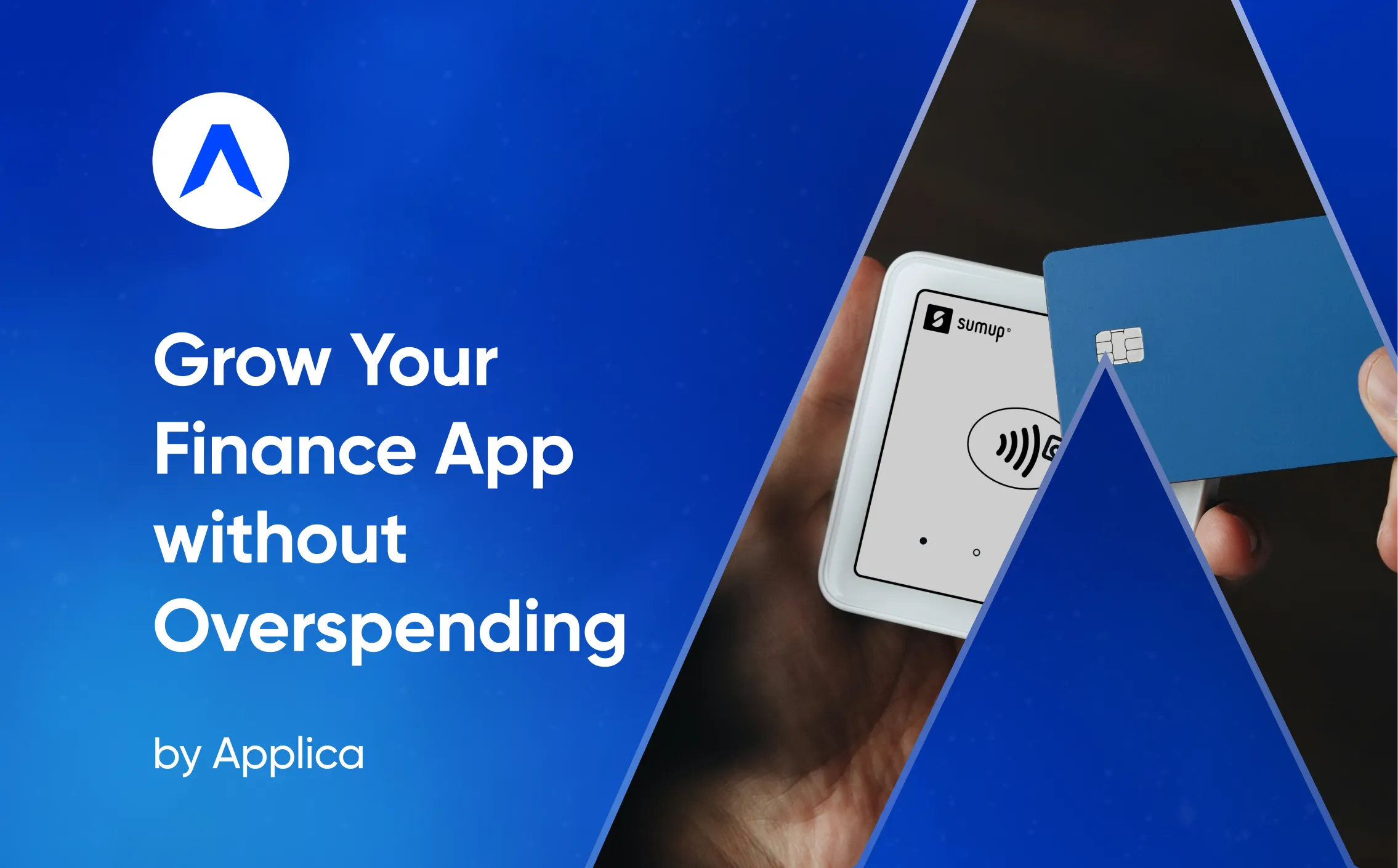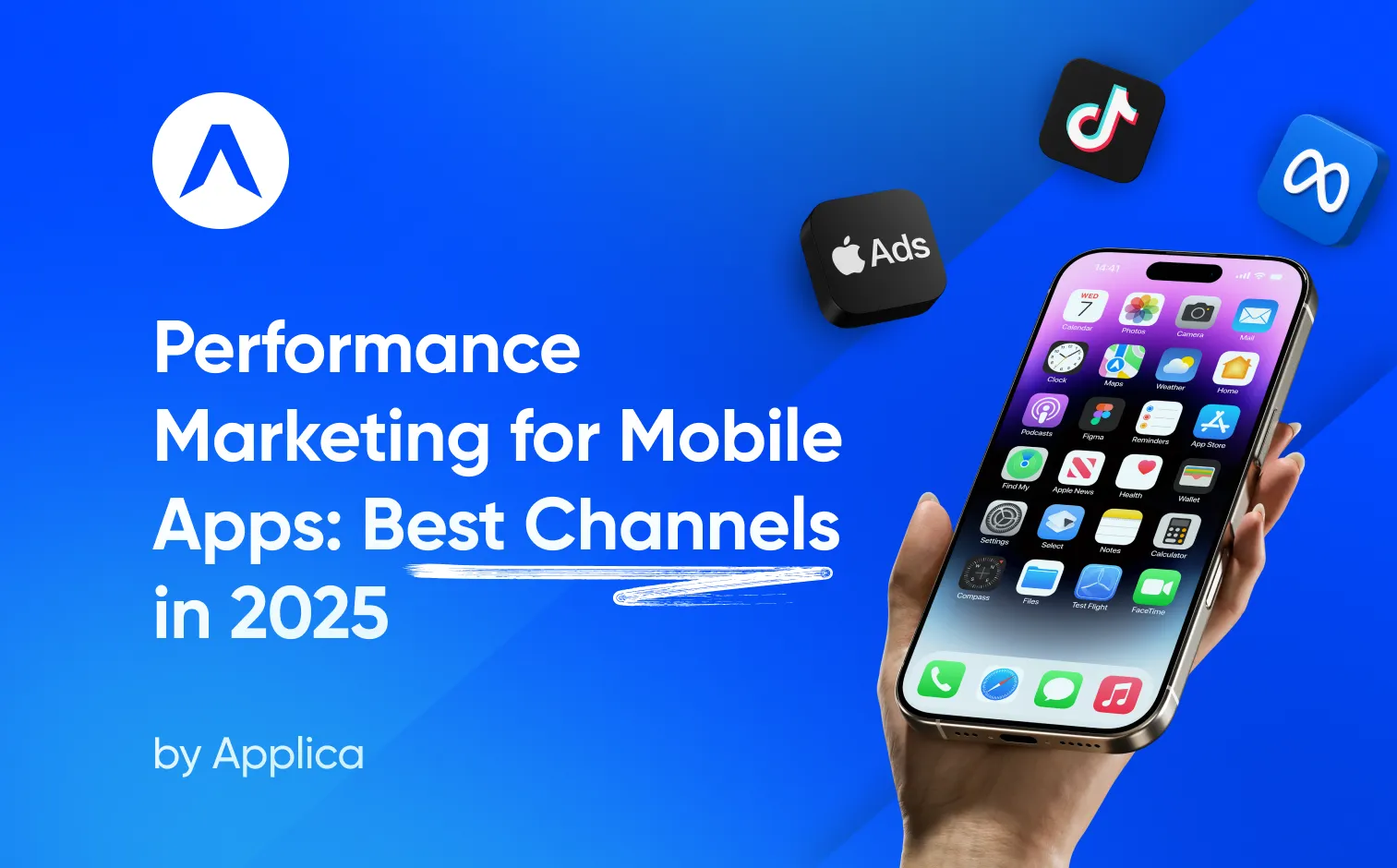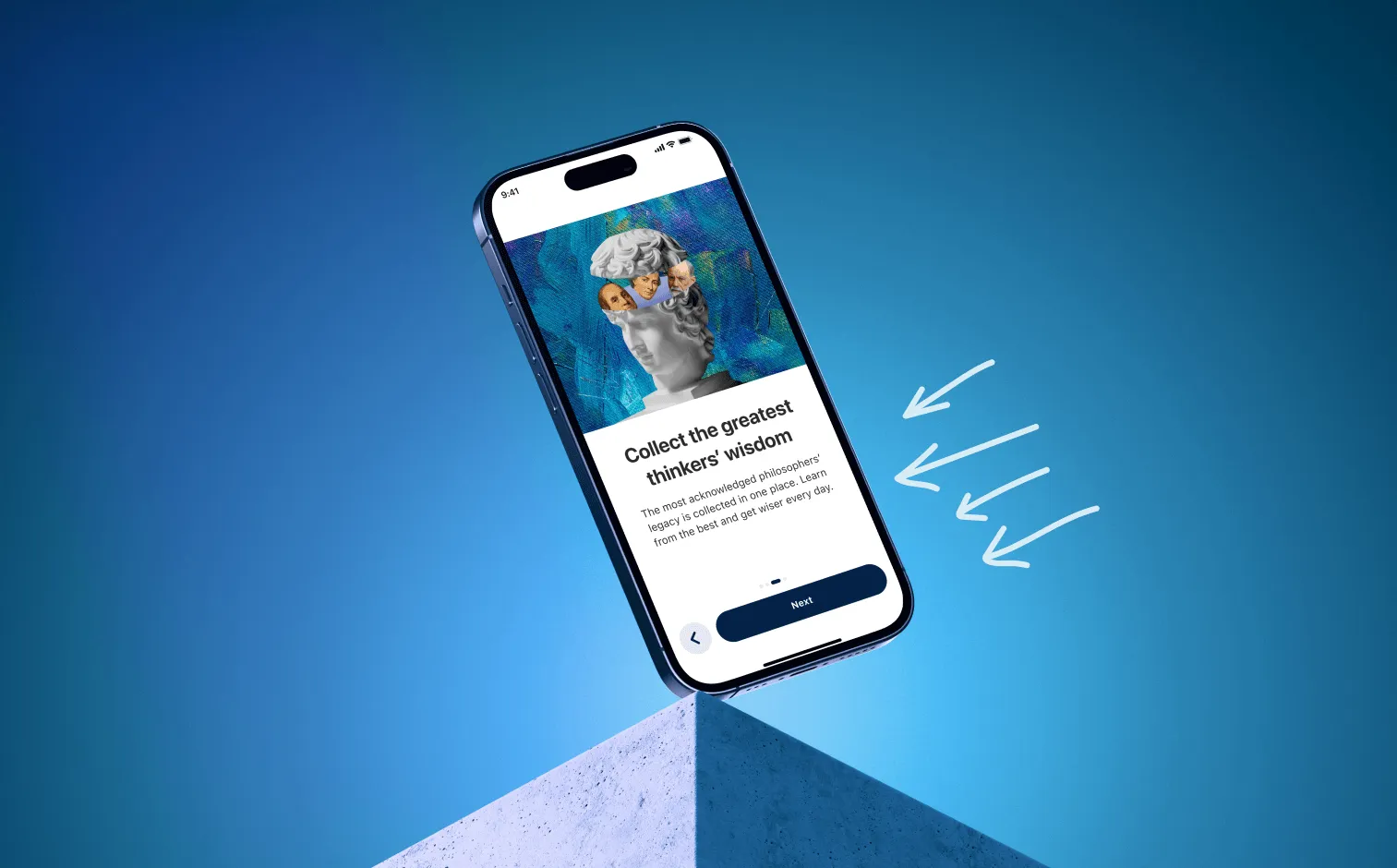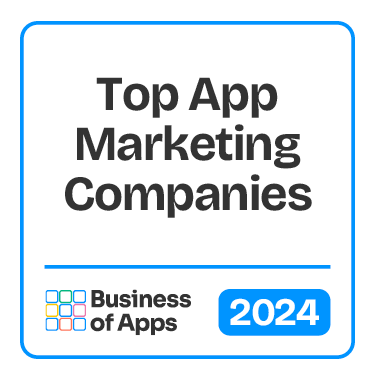Fintech is one of the fastest-growing yet most regulated sectors, and the mobile app industry is no exception. Finance apps today face the constant challenge of balancing user acquisition, compliance, and optimizing customer acquisition costs in highly competitive and strictly regulated markets.
At Applica, we’ve spent years helping fintech brands sustainably scale their mobile apps through data-driven growth strategies. In this guide, we’ll break down how to scale a fintech app without overspending and share actionable tactics for ASO, paid UA, A/B testing, and retention & re-engagement.
Whether you’re building an investment app, app for online payments or a digital wallet, this article will help you grow faster.
Understanding the Finance Apps Challenges
Finance is one of the most rapidly evolving industries, but the regulatory complexities going hand in hand with finance apps are developing just as quickly. Unlike lifestyle, gaming, or entertainment apps, finance apps must always be on guard in terms of compliance, financial regulations, ad restrictions, and user data protection laws.
Why mobile marketing for finance apps is different
Here are some reasons why marketing and scaling a finance app is far more complex than growing other types of apps.
- Longer onboarding funnels: For many finance app subcategories, users must verify identity and sometimes connect bank accounts before they become active.
- Increased acquisition costs: Finance is a highly competitive category, and the stakes are higher – in every sense. For example, CPI and CPA are among the highest (usually in the top three) for Finance on Apple Ads.
- Heavier compliance review cycles: In some cases, creatives and app descriptions require legal or compliance sign-off before launch.
- Regulatory compliance.
How regulation impacts mobile marketing strategies for finance apps
Financial regulations like KYC (Know Your Customer), AML (Anti-Money Laundering), PSD2 (Payment Services Directive 2), and GDPR heavily influence how fintech apps can promote and onboard users.
- Ad creatives for finance apps must avoid financial promises (“earn instantly,” “guaranteed returns”).
- Regional certifications are often required before running ads on Meta or Google app campaigns.
- Even on app store finance apps can face stricter requirements. For example, Apple's updated App Store Review Guidelines (as of June 9, 2025) specify that financial apps must have the necessary licensing and permissions in the locations where developers make them available.
Additionally, finance regulations in the U.S. and in the European markets differ, so fintech apps aiming for global presence need to also focus on navigating these differences.
Common Pitfalls When Scaling a Finance App
Based on what we’ve discussed, scaling a finance app is no simple task. On their way to success, finance app businesses meet a lot of challenges and make mistakes. Here are a few of them to avoid:
Not tracking verified users vs. general installs
It’s important to distinguish between users who simply install the app and those who complete the full verification process to become active, compliant users.
While general installs are coming from all users who just downloaded a finance app from an app store, verified users are those who completed KYC, linked a bank account, or otherwise met regulatory requirements. These are the users who can actually perform transactions, invest, or make payments.
So, only verified users generate revenue, LTV, or meaningful engagement metrics for finance apps.
If you track only installs, your cost per acquisition (CAC) looks too low, while many installs never convert into active, revenue-generating users.
Overspending on paid UA too early
Many finance apps make the mistake of jumping straight into large-scale paid UA campaigns before optimizing their onboarding flow, ASO, or retention strategies. While paid ads can drive installs quickly, without a clear understanding of verified users vs. general installs, which we’ve discussed in the first point, you risk inflating your CAC and wasting budget.
For example, a campaign might deliver 1000 installs, but if only 300 users complete KYC and fund their accounts, your real CAC per revenue-generating user is more than three times higher than initial estimates, which is a big deal.
- 1000 installs
- 300 users complete verification (KYC + bank account linked)
- CAC per install: $10 – looks fine
- CAC per verified user: $33 – not so great, but is the real picture of cost efficiency
Running ads and trying to scale before your onboarding and verification flows are optimized often leads to low ROAS and overspending.
Poor ASO and localization strategy
It’s no secret that ASO is the foundation of organic growth, yet many finance apps neglect it or skip localizing their app store listings for key target markets. Keywords must be relevant, while descriptions, and screenshots must communicate trust, compliance, and security, which are critical in finance.
Localizing your store listing, adding region-specific elements and disclaimers, can increase conversion, while also ensuring compliance with local advertising rules. Without strong ASO and localization, your finance app is not ready for paid UA campaigns: they can turn into budget waste.
Not using custom product pages and custom store listings
App Store and Google Play provide the opportunity to create multiple custom pages for your finance app: custom product pages (CPPs) and custom store listings accordingly. They allow you to tailor your app’s store listing to different segments of your target audience, ad campaigns, and promote versatile features of the app.
Apps that fail to leverage custom product pages miss out on incremental installs and higher-quality users who are more likely to complete verification or fund accounts.
Not segmenting audiences by verification / activity
Some finance apps treat all users the same in their paid ads, push notifications, or re-engagement campaigns. But verified users behave very differently from those who simply install the app and drop off during onboarding. Without segmentation, your messages lose relevance and precision, while marketing spend is wasted on inactive or unverified users, leading to inefficient campaigns, low engagement, low ROAS, and high churn.
Not A/B testing
Launching campaigns or app store updates without A/B testing experiments means relying on assumptions instead of data. A/B test your app store visuals, ad creatives, descriptions, and onboarding flows to optimize your finance app for verified user conversion.
Otherwise, you’re missing out on opportunities to improve conversion rates and wasting your mobile marketing budget.
Not reacting and responding to user reviews
User reviews are one of the most visible trust signals for finance apps. And let’s be honest: for all mobile apps. Ignoring them can make your app look unresponsive or unreliable. Responding quickly and thoughtfully not only improves user perception but also boosts app store rankings and shows accountability, which is critical in a trust-driven category like finance.
Underestimating regulatory and compliance requirements
Even the most creative paid UA campaign or onboarding flow can fail if it breaks KYC, PSD2, GDPR, or other local financial regulations. Being a finance app founder or marketer, always keep in mind that compliance and regulations must be at the forefront of everything you do. Ignoring compliance requirements can result in app rejections, delayed launches, or even fines, hurting both your app’s growth and credibility.
ASO for fintech apps
ASO is the foundation of growth: not just organic, but mobile growth overall. For finance apps, app store optimization is crucial for building visibility and trust through app store visuals and copy. Your app store listing needs to communicate security, compliance, and credibility from the first impression, and each product page element contributes to that.
Keyword strategy for finance apps
A smart keyword strategy is central to the discoverability of any finance app. Before optimizing your app store product page, clarify your positioning (a budgeting tool, investing platform, or digital bank), since each category attracts different search intents. Users searching for “expense tracker” differ from those looking for “best stock trading app.”
Then organize keywords into clusters around user intent. Use:
- Core terms for visibility: “budget app,” “personal finance app”, “neobank app”
- Feature-based terms to highlight unique functionality & value proposition: “expense tracker”
- And pain-point terms that tap into user needs: “how to stop overspending” or “quick money transfers”.
This layered approach ensures your app appears across both broad and specific searches.
In your app store listing, include primary keywords naturally in the title and subtitle and reinforce them in the description and screenshots.
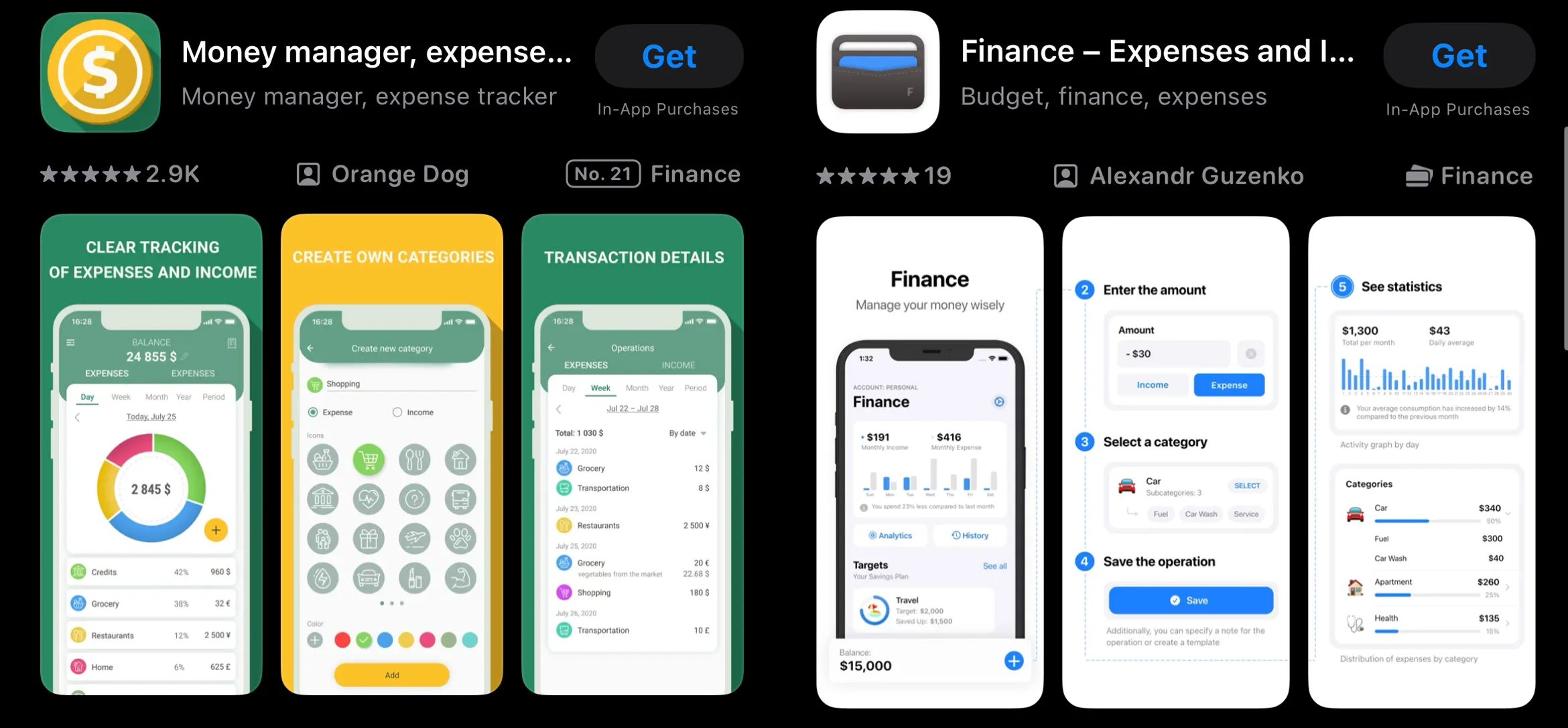
Image source: App Store
Continuous testing of wording, visuals, and metadata helps improve discoverability and conversion rates over time.
A well-structured keyword framework doesn’t just boost rankings: it aligns your ASO, paid campaigns, and even SEO content under a single, scalable strategy for sustained growth.
Use tools like AppTweak or Sensor Tower to identify keywords your competitors are ranking for and analyze which terms drive verified, not just casual, installs. Prioritize high-intent, lower-competition keywords that resonate with your target audience.
Conversion optimization on app stores
Driving traffic to your app store listing is only half the battle: turning it into downloads is where real growth happens. For finance apps, conversion optimization hinges on clarity, trust, and differentiation. Users can be cautious with financial products, so your app store product page must immediately convey trustworthiness, security, and value.
Your visual assets play an equally crucial role. Use clean, professional screenshots that focus on real use cases: tracking expenses, growing savings, or monitoring investments, rather than abstract graphics. Each screenshot should highlight one clear benefit with concise captions. For finance apps, subtle visual cues like charts, balance screens, or goal progress bars can quickly communicate functionality and credibility.
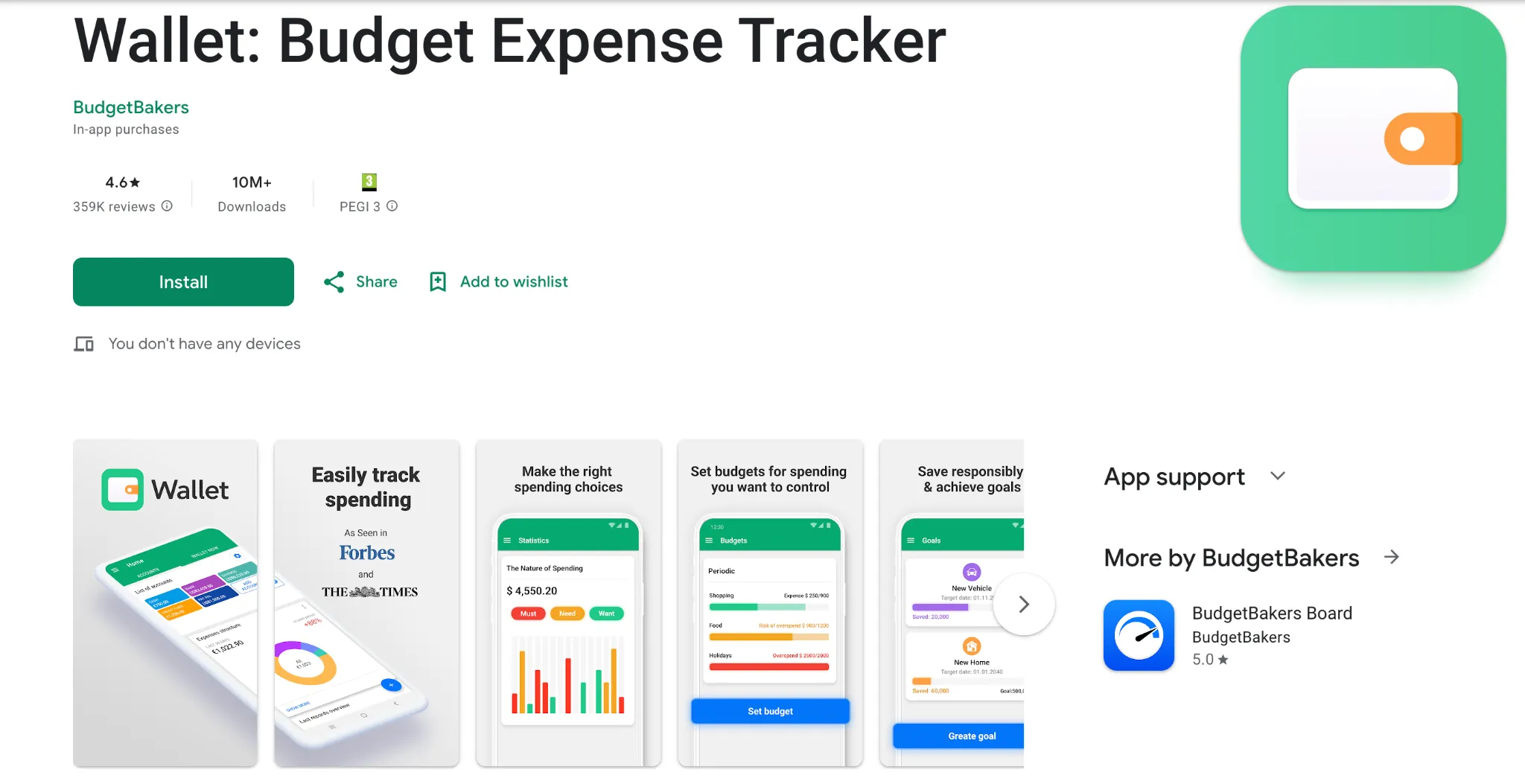
Image source: Google Play
Also, social proof elements (like 1M+ users) can significantly reduce hesitation and induce users to download.
The app title, subtitle, and first two lines of your description also play a big role for conversion. They should blend keyword relevance with emotional appeal: think “Take control of your money” or “Invest smarter with less stress.” Including social proof, awards, or media mentions can further strengthen credibility.
Finally, use A/B testing to iterate on visuals, messaging, and CTAs. Even small optimization tweaks can lead to measurable improvements in conversion rates.
Localization and market-specific messaging
Localizing your app store listing can significantly improve user engagement and conversion. Adjusting app store product pages to cultural specificities and regional languages is important for any app that would like to reach out to target audiences across different key markets.
For finance apps, this is basically a must-have. Localization for fintech isn't just linguistic and cultural, it’s also regulatory. Ensure that compliance disclaimers, terms, descriptions and screenshots are tailored for each region, particularly across EU, APAC, and LATAM markets where financial standards differ.
Ratings and review management
User reviews are a huge source of user feedback for fintech apps: they reveal critical bugs, feature requests, and even ASO keyword ideas. Yet too many apps still overlook them. Treat app store reviews as a growth lever for your finance app. It builds trust, strengthens retention, improves store rankings, and shapes how potential users perceive your brand.
Negative reviews should be your first priority. Respond quickly and respectfully, ideally within the first few hours, and, most importantly, work to resolve the issue. Finance is a sensitive domain, and fast, transparent communication is crucial. When users raise questions, reply thoughtfully, especially on topics like security or compliance. Positive reviews deserve your attention too: say thank you, and maybe even leverage the wording your customers use in your ASO keyword strategy.
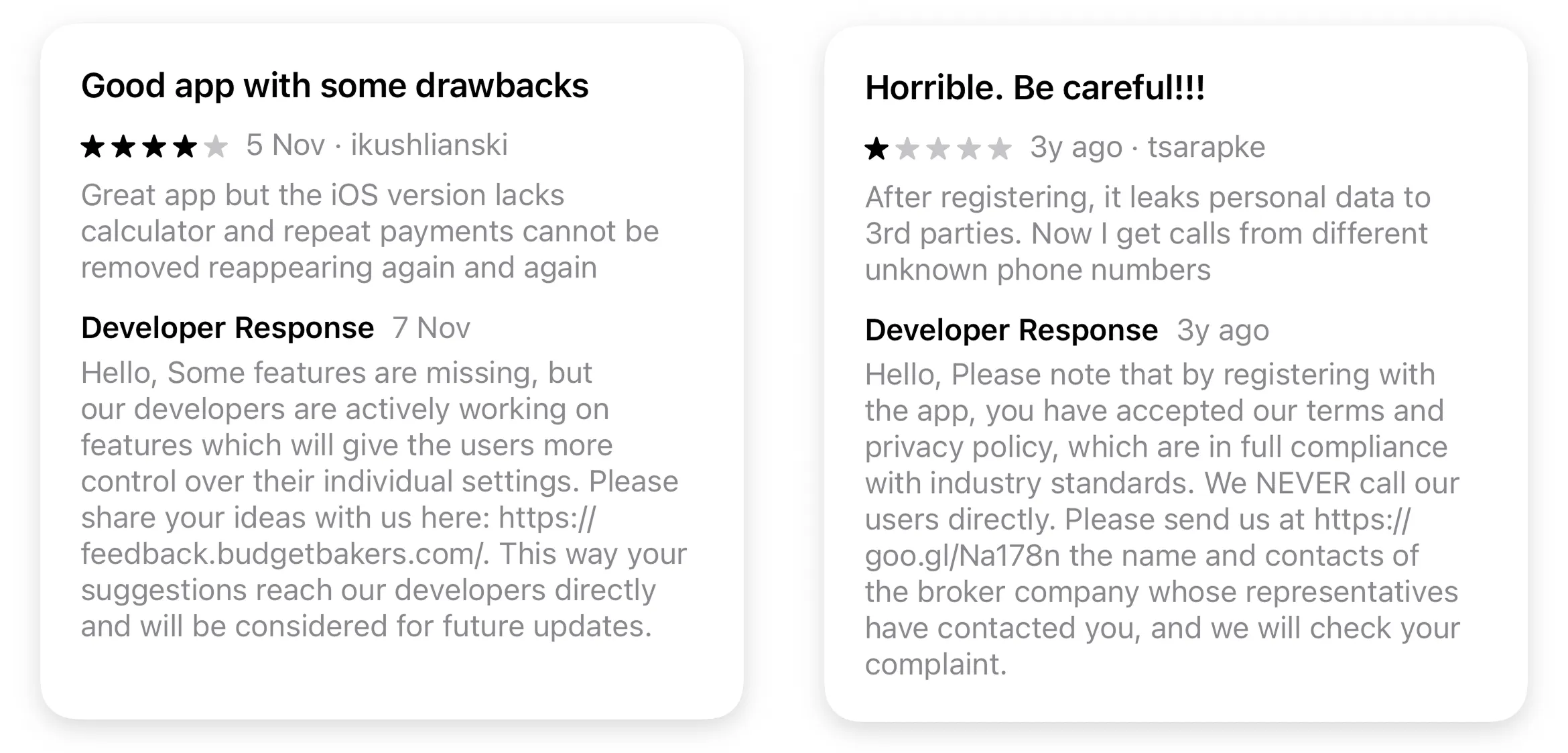
Examples of thoughtful responses to both positive and negative user reviews
Paid User Acquisition (UA) for Fintech Apps
Scaling a fintech app with paid UA requires a strategic, compliant, and cost-efficient approach. Finance apps face stricter advertising rules, higher acquisition costs, and sensitive user data, so every campaign must be designed with compliance and verified-user ROAS in mind.
Navigating advertising restrictions
Not all ad networks allow financial products. Major options include:
- Google Ads – certified financial advertisers only
- Meta – requires certification for finance ads
- TikTok – limited access, strict review process
- Reddit – financial ads allowed with restrictions
- Apple Ads – adhere to App Store Review Guidelines and Advertising Policies.
Ad creatives and copy must avoid claims like “instant approval” or “guaranteed returns”. Compliance-first messaging builds trust and reduces the risk of disapprovals.
Looking to scale your app with paid UA campaigns? Applica Agency has you covered! Let’s talk!
Choosing the right channels for each stage
Different stages of growth demand different UA strategies to balance cost, compliance, and user quality.
- Early growth: Apple Ads and Google UAC are ideal for acquiring high-intent, verified users with minimal compliance risk. These channels capture users actively searching for financial solutions, meaning installs are more likely to convert to KYC-completed, revenue-generating users. Optimize your app store listing first and use high-converting ad creatives. Try custom product pages with Apple Ads.
- Scale stage: Paid social channels like Meta and TikTok help expand reach beyond search-driven traffic. At this stage, campaigns should focus on lookalike audiences, predictive targeting, and retargeting warm prospects. Carefully monitor spend and maintain a compliance-first approach in ad copy, as wider reach increases scrutiny in regulated markets.
- Retention stage: Once users are verified, the focus shifts to reactivation and long-term engagement. Retarget verified users who have become inactive with personalized messages, push notifications, or in-app promotions. Segment campaigns based on user behavior, verification stage, and transaction history to boost LTV and reduce churn. At this stage, leveraging first-party data and predictive insights ensures every marketing dollar drives measurable value and leads to scalable growth.
Reducing CAC through data-driven targeting
To decrease acquisition costs and maximize ROAS and ROI for your finance app, focus your ad spend on high-value, verified users to maximize ROI and minimize wasted budget:
- Use predictive audiences based on KYC completion, early activity, and engagement to identify users likely to convert to revenue-generating accounts.
- Exclude unverified or low-LTV users. You don’t want to pay for installs that never activate or fund an account.
- Leverage lookalike audiences from your best-performing verified users to scale efficiently while maintaining quality.
- Behavioral targeting: segment users based on in-app actions, transaction behavior, or engagement patterns to show them more relevant ads.
- Retargeting inactive verified users: re-engaging these users is often cheaper than acquiring new users.
Measuring UA efficiency
Track metrics that reflect real performance of paid UA campaigns for your finance app:
- CPI
- CVR to verified users (conversion from install to KYC completion)
- LTV:CAC ratio – a 3:1 ratio is often considered sustainable for fintech apps.
Focusing on verified users ensures you measure campaigns by quality and revenue potential, not just volume.
A/B Testing and Continuous Optimization
Top-performing finance apps grow efficiently by testing every step of the user journey. In a regulated market, assumptions can be costly: overspending on campaigns that don’t convert or creating onboarding flows that frustrate users can hurt both growth and compliance.
What to A/B test for your finance app
- Ad creatives and CTAs: Captions, calls to action, visuals, and messaging to see what drives verified installs.
- Onboarding flows and KYC UX: Small changes in copy, sequence, or verification steps can significantly improve completion rates.
- Push notification timing and content: Identify when and what type of messaging drives engagement without doing it too early or too often and annoying users.
- App store product page creatives: Icon, title, screenshots, and description impact conversion from impressions to verified users.
- Custom product pages: don’t forget to test CPPs that now work perfectly not only for paid UA campaigns, for Apple Ads and other channels, but also for organic growth.
How to run tests without overspending
- Start with 10-20% traffic splits rather than full-scale launches.
- Use soft-launches or geo-test strategies before rolling out globally.
- Document learnings, especially any compliance-related insights, to inform future campaigns and audits.
Or just partner with Applica to delegate the whole process of A/B testing to experts.
Retention and Re-Engagement Strategies
Keeping users engaged is a critical challenge for finance apps. Leveraging push notifications, emails, and targeted campaigns can significantly improve retention and re-activate inactive users.
1. Push and email triggers based on activity
Sending timely, personalized messages encourages users to stay engaged. Activity-based triggers can include savings milestones, budget tracking progress, or spending insights. For example, a push notification could congratulate a user on saving $300 this month or alert them to changes in their spending patterns.
Inactivity-based triggers are equally important. Short-term inactivity reminders might nudge users who haven’t logged in for a few days, while medium- and long-term reminders can highlight potential missed savings or introduce new features to spark interest. Personalization, clear calls-to-action, and balanced frequency are key to avoiding push fatigue.
Note: Finance apps can send emails to users only after explicit consent, usually collected during onboarding or sign-up.
They must comply with regulations like:
- GDPR (EU) – Users must opt-in to marketing emails and can opt-out anytime.
- CAN-SPAM (US) – Must include clear unsubscribe options and valid sender info.
- Local data protection laws – Similar consent and data handling rules.
Emails can’t contain sensitive financial details: account numbers, balances, or transaction data.
2. Personalized finance insights
Users are more likely to stay active when the app provides tangible value. Personalized insights, such as monthly savings reports, spending trends, or goal progress updates, help users understand their financial status at a glance. Incorporating real-time data, visual charts, and motivational messaging can make these insights even more engaging and actionable.
3. Re-targeting inactive users
Verified but inactive users represent a valuable segment for re-engagement. Apple Ads campaigns, combined with email retargeting, can effectively bring these users back. Messaging should focus on new features, improved app functionality, or financial benefits, such as “See how much you could save this month.” Small incentives, like temporary premium access, can further encourage return visits.
4. Enhancing engagement through gamification and smart features
Additional retention strategies include gamification, such as badges, streaks, or savings challenges, and AI-driven notifications offering personalized spending suggestions. Community features, where users can share achievements or tips, can also increase stickiness and long-term engagement.
By combining timely push notifications, personalized insights, and targeted campaigns, finance apps can not only retain existing users but also re-engage those who have been inactive.
Case Study: How Nemo Money partnered with Applica and Decreased Cost per Deposit x8
Nemo Money, an investing app designed to help users grow their wealth with ease, partnered with Applica to overhaul their paid acquisition and conversion strategy. Over a 6-month collaboration, the teams achieved remarkable results: Nemo Money reduced its Cost per Deposit on Meta by 8x, Cost per Deposit on Google Ads 3x, developed 700+ ad creatives, overcoming ad fatigue, and regained scalable, efficient growth during a challenging market environment.
The strategy was:
- Resolve IOS attribution issues that were driving high CPAs
- Navigate user hesitation due to recession: related news impacting investment behavior
- Integrate localized payment methods to improve conversion across key markets
- Address ad rejections and implement creative localization strategies
- Leverage data from Amplitude, MMP, and Google UI to inform performance decisions.
Applica’s team produced 700+ creative ad assets. Then experts structured ad groups based on different clusters and ran ads only on relevant topics. UGC appeared to be the best performing ad format: storytelling has much more impact on users who trust people more than images and motion videos.
This collaboration led to the following achievements:
- 8x decrease in Cost per Deposit on Meta;
- 3x decrease in Cost per Deposit on Google Ads through a holistic campaign structure combining Performance and Brand campaigns;
- 700+ ad creatives produced and tested, overcoming ad fatigue and rejections.
Looking to achieve similar results? Partner with Applica Agency for ultimate mobile growth!
Future Trends in Finance App Marketing
The way finance apps grow is evolving fast. With stricter privacy rules and smarter automation, the next wave of growth will rely on data intelligence, creative testing, and compliant innovation, not just bigger budgets (which also matter).
AI-driven creative testing
AI-driven creative testing will reshape how mobile marketers optimize campaigns for finance apps. Instead of manual iterations, AI will help identify which ad angles, visuals, or value propositions drive verified user conversions faster. However, successful A/B testing should still be managed by experienced specialists, while AI is an excellent tool in skilled hands that helps generate more hypotheses.
Predictive LTV modeling
Predictive LTV modeling will take center stage. With limited tracking data, understanding a user’s lifetime value early, based on behavior and verification signals, will be key to optimizing paid campaigns and spend efficiency.
Privacy-first user targeting (SKAdNetwork 5.0, Google Privacy Sandbox)
As privacy-first user targeting becomes the new normal, frameworks like SKAdNetwork 5.0 and Google’s Privacy Sandbox will redefine attribution, making creative quality and first-party data even more critical for performance.
Regional fintech ad regulations evolving
Regional fintech ad regulations will continue to evolve. Markets like the EU, and LATAM are tightening rules on financial advertising and data use. Staying compliant while maintaining creative flexibility will help sustainable finance apps scale effectively.
“Scaling a finance app in regulated markets is never just about performance: it’s about agility, precision, and strategy. Fintech mobile brands need partners who understand both compliance and growth. At Applica, we help finance apps scale sustainably, combining data-driven marketing, creative strategy, and deep vertical expertise to reach verified users efficiently.”
Artem Kuzmych
CEO at Applica
FAQ
How can fintech apps acquire users without overspending?
Fintech apps can grow sustainably by combining strong ASO, localized app store listings, and data-driven paid campaigns. Focus on tracking verified users, not just installs, to measure real ROI. Use referral programs, cross-promotions with trusted partners, and content-led acquisition to reduce CAC over time.
What is the best ASO strategy for finance apps?
A winning ASO strategy for finance apps starts with keyword optimization, trust- and security-focused messaging, and localized creatives. Highlight compliance, security, and credibility in your visuals and copy. Use custom product pages to target different user intents (investing, saving, payments) and continuously A/B test store assets to improve conversion and increase downloads.
How do paid ads work for regulated fintechs?
Paid ads for finance apps require careful compliance review and platform-specific approvals on Meta, Google or Apple Ads. Focus on clear, transparent messaging. Avoid promises of returns or “instant money.” Pair your campaigns with optimized onboarding to ensure ad spend drives verified and funded users, not just installs.
What should fintechs test in A/B campaigns?
Finance apps should A/B test ad creatives, onboarding flows, and app store creative assets. Even small changes such as captions & CTAs on the screenshots, value proposition order, or even color palettes can positively shift conversion. Prioritize tests that impact KYC completion, funding rate, and retention.
Do I need an app marketing agency to scale my finance app?
Partnering with an app marketing agency can significantly accelerate growth in regulated markets while minimizing risk. Agencies like Applica, with deep expertise in fintech and mobile growth, combine creative compliance, paid UA strategy, A/B testing, and analytics to help you scale efficiently without overspending.
How can finance apps improve retention and re-engagement?
Retention starts with a smooth onboarding and verification experience, followed by consistent user value delivery. Finance apps should focus on personalized in-app messaging, push notifications tied to real user activity (transaction milestones or savings goals), and educational content.
For re-engagement, segment users by activity level and send targeted campaigns to inactive or unverified users. Reward returning customers with loyalty benefits, personalized offers, or educational content. Well-executed reactivation campaigns not only reduce churn but also strengthen customer loyalty and lifetime value, particularly when tailored to user behavior and verification stage.
Conclusion
Scaling a finance app without overspending can feel like navigating a jungle – every day brings new challenges: shifting regulations, strict compliance, rising costs, and the constant pressure to grow efficiently. Having a partner like Applica, a full-cycle app marketing agency, gives you a strong ally: one that understands the terrain and helps you move forward with strategy, speed, and confidence.



